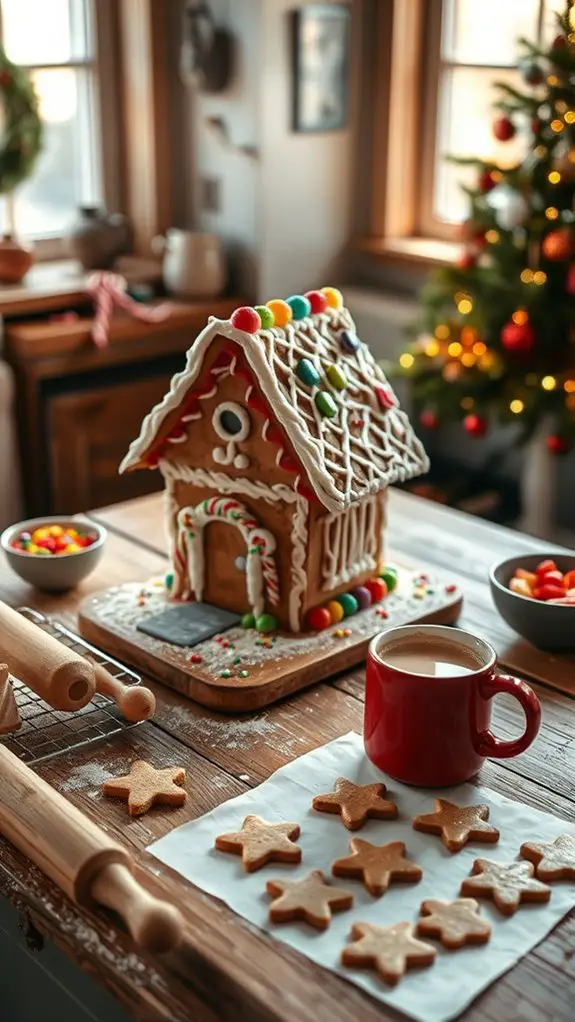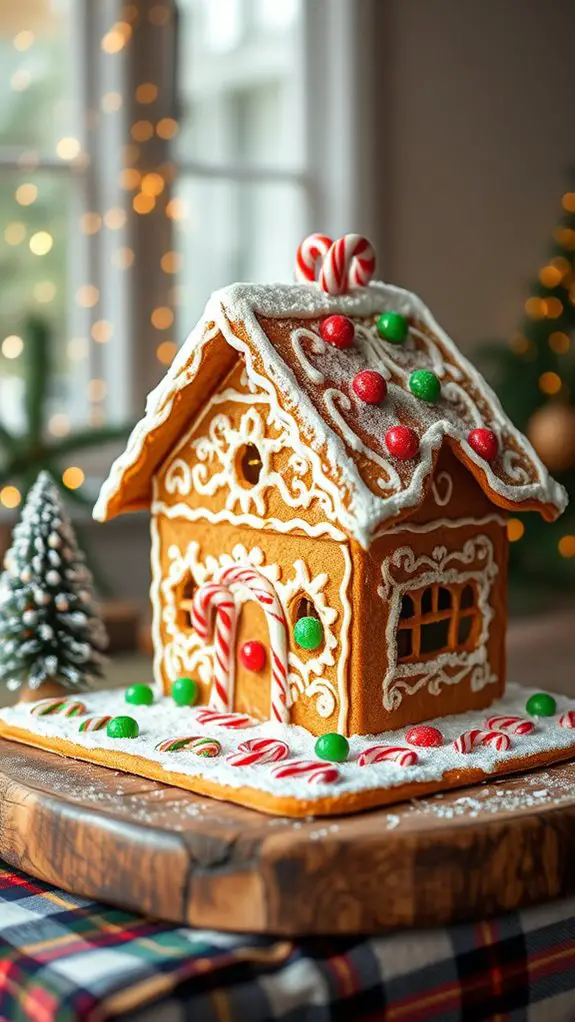The intoxicating aroma of warm gingerbread wafts through the air, enveloping the senses and sparking a sense of nostalgic delight. Crafting a homemade gingerbread house is a cherished holiday tradition that invites families to express their creativity, bond over a shared experience, and capture the enchantment of the season. But what secrets lie within this delectable endeavor?
History

Although the origins of the gingerbread house can be traced back to Germany in the 16th century, the tradition of making these festive treats gained widespread popularity during the 19th century.
You'll find that the gingerbread origins are deeply rooted in Europe's holiday traditions, where it was initially crafted as an ornamental delight.
Over time, the humble gingerbread house transformed into an iconic symbol of the Christmas season, enchanting children and adults alike with its charming, edible architecture.
Today, the annual ritual of building and decorating these whimsical structures remains a beloved family activity, preserving the timeless magic of this beloved holiday tradition.
Recipe

Gingerbread is a beloved holiday treat, and making a homemade gingerbread house is a fun and rewarding activity. This classic recipe produces a sturdy yet delicious gingerbread that can be used to construct a charming house.
The key to a successful gingerbread house is confirming the dough is the right consistency – not too sticky or too dry. With the right balance of ingredients and careful shaping, you can create a whimsical centerpiece that will impress your guests and delight your family.
Ingredients:
- 3 cups all-purpose flour
- 1 teaspoon baking soda
- 1 teaspoon ground ginger
- 1 teaspoon ground cinnamon
- 1/4 teaspoon ground cloves
- 1/4 teaspoon salt
- 1/2 cup unsalted butter, softened
- 3/4 cup packed brown sugar
- 1 egg
- 1/2 cup molasses
Instructions:
In a large bowl, whisk together the flour, baking soda, ginger, cinnamon, cloves, and salt.
In a separate bowl, cream the butter and brown sugar until light and fluffy. Beat in the egg and molasses until well combined. Gradually add the dry ingredients to the wet ingredients, mixing until a thick dough forms. Wrap the dough in plastic and refrigerate for at least 2 hours or up to 3 days.
When ready to bake, preheat the oven to 350°F. Roll the dough out to 1/4-inch thickness on a lightly floured surface. Use cookie cutters or a knife to cut out the desired shapes for your gingerbread house, such as walls, roof, and decorative pieces. Carefully transfer the shapes to parchment-lined baking sheets. Bake for 12-15 minutes, until the edges are lightly golden. Allow the pieces to cool completely before assembling.
Tips:
To confirm your gingerbread house maintains its structure, be sure to let the pieces cool completely before attempting to assemble.
You can also score the edges of the pieces with a knife to create a better adhesive surface when using royal icing. Additionally, consider adding extra spices or decorative touches, such as slivered almonds or colored sugars, to make your gingerbread house truly unique.
Nutritional Guide
While the joy of baking and constructing a homemade gingerbread house can't be overstated, it's important to contemplate its nutritional profile. The primary ingredients – flour, molasses, and spices – offer modest nutritional benefits.
The flour provides complex carbohydrates, while molasses contains small amounts of minerals like iron and calcium. The spices, such as ginger and cinnamon, contribute antioxidants.
However, the high sugar content and lack of substantial protein, fiber, or healthy fats mean the gingerbread house isn't a particularly nutritious treat. An ingredient breakdown reveals it's fundamentally a sugary, energy-dense confection.
Thoughtful moderation is advised when indulging in this festive delight.
Final Thought
Creating a homemade gingerbread house certainly sparks festive joy, yet you must temper your enthusiasm with pragmatism.
While crafting a unique, eye-catching creation may be your goal, remember that maintaining family traditions and fostering creative decorating are equally important. Embrace the process, not just the final result.
Celebrate the time spent together, the laughter shared, and the memories made. Savor the simple pleasures of rolling dough, cutting shapes, and adorning the structure with colorful candies.
The true reward lies not in perfection, but in the journey itself. Cherish this annual ritual, for it binds your loved ones closer, year after year.